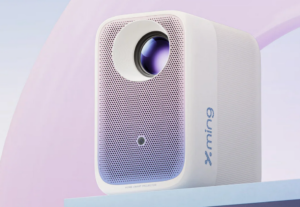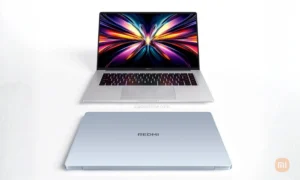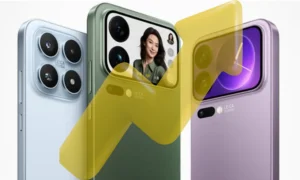Breaking Free from the Apple Ecosystem: How Xiaomi’s HyperConnect Redefines Connectivity
Introduction to Xiaomi HyperConnect
Xiaomi has recently unveiled its innovative feature, HyperConnect, as part of its flagship smartphones, the Xiaomi 15 and 15 Pro. This remarkable technology stands out in the current market by offering enhanced connectivity options that significantly bridge the gap between Xiaomi devices and Apple products. The rise of cross-platform compatibility has become essential, particularly for users entrenched in the Apple ecosystem, and Xiaomi’s HyperConnect addresses this need with seamless efficiency.
The defining aspect of HyperConnect is its ability to facilitate effortless file sharing and screen mirroring between different devices. This means users can easily transfer photos, videos, and documents from their Xiaomi smartphones to Apple devices, thereby eliminating the tedious process of navigating through different applications. More impressively, it provides support for Apple Keynote, allowing users to present their work without the hassle of converting files or using additional software. This level of integration represents a significant leap forward in enhancing user experience across platforms.
The launch of Xiaomi HyperConnect is more than just a technological advancement; it is a strategic move to redefine the user experience. By prioritizing interoperability, Xiaomi is appealing to both existing Xiaomi users and those considering a switch from Apple. With this feature, there is a compelling reason for individuals to venture beyond their traditional device ecosystems, exploring the possibilities that a diverse range of technology can offer.
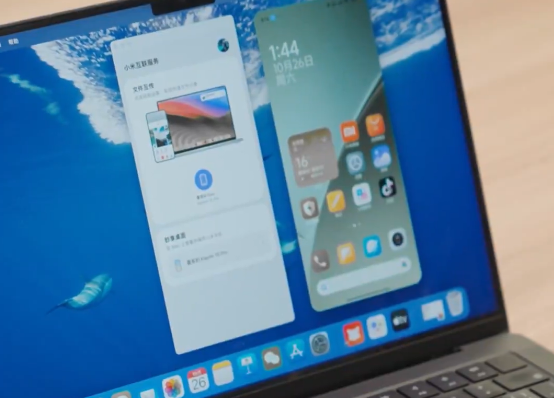
The Functionality of HyperConnect: A Game Changer
Xiaomi’s HyperConnect presents a significant shift in how users can seamlessly interact with devices across different ecosystems. One of the standout features of HyperConnect is its intuitive file-sharing capability, which allows for effortless transfers between Xiaomi devices and Apple products. Unlike traditional methods that often involve complicated setups or multiple steps, HyperConnect streamlines this process. Users can share files with a simple, single-tap action, significantly reducing the time and effort typically required for such tasks.
The advantages of this functionality are particularly evident when examining the user experience highlighted in Lei Jun’s promotional video. The video demonstrates how a user can initiate file transfers in real time, showcasing the efficiency of the single-tap transfer capability. This feature not only supports image and document sharing but is also compatible with various file formats, making it a versatile tool for users who frequently engage with different types of content. Compared to OnePlus’s OxygenOS 15, which offers its own file-sharing capabilities, HyperConnect provides a more user-friendly interface that minimizes the typical friction associated with cross-ecosystem interactions.
Additionally, HyperConnect enhances productivity through its screen mirroring functionality. This feature allows users to project the screens of their Xiaomi devices onto other displays effortlessly, enabling convenient access to apps, information, and presentations. The ability to mirror content from a mobile device to a larger screen simplifies many tasks, such as sharing presentations or viewing media, without the cumbersome need for cables or complex setups. Overall, Xiaomi’s HyperConnect represents a promise of simplified digital interactions that cater to the evolving needs of users, particularly those who operate across multiple platforms.
Current Limitations and Future Prospects
As Xiaomi’s HyperConnect technology emerges as a potential game-changer in the realm of connectivity, it is essential to recognize the existing limitations that might hinder its immediate global adoption. Currently, HyperConnect is exclusively available in China, integrated with the innovative HyperOS 2. This exclusivity means that users outside of China are left without direct access to this advanced connectivity framework, limiting its potential impact on global markets.
The implications of this localized availability are significant. For instance, international users who seek to leverage the benefits of HyperConnect for seamless inter-device communication and enhanced functionality must rely on alternative solutions, thereby generating a sense of exclusion. Moreover, this limitation cultivates uncertainty about when or if the technology will extend its reach beyond Chinese borders. While Xiaomi’s commitment to technological advancement is undisputed, the current scenario presents a barrier for global users eager to engage with HyperConnect’s capabilities.
However, there is fertile ground for speculation regarding HyperConnect’s future prospects. Recent initiatives by Lei Jun, Xiaomi’s CEO, including his video sharing on platforms like X, could hint at the company’s intent to broaden the availability of HyperConnect. These endeavors have stirred excitement among international fans of the brand, suggesting that Xiaomi is contemplating strategies for a more extensive rollout. Such possibilities hint at a vision where the HyperConnect ecosystem could eventually serve as a unifying platform for users worldwide, connecting devices across varying operating systems and locales.
While we celebrate the advancements represented by HyperConnect, it is prudent to temper expectations with an understanding of its current limitations. The journey toward enhanced global connectivity is complex and requires time, strategic planning, and technological enhancements to transform HyperConnect from a regional offering into a worldwide standard. As Xiaomi navigates this trajectory, the community eagerly anticipates developments that could eventually redefine interconnectivity on a global scale.
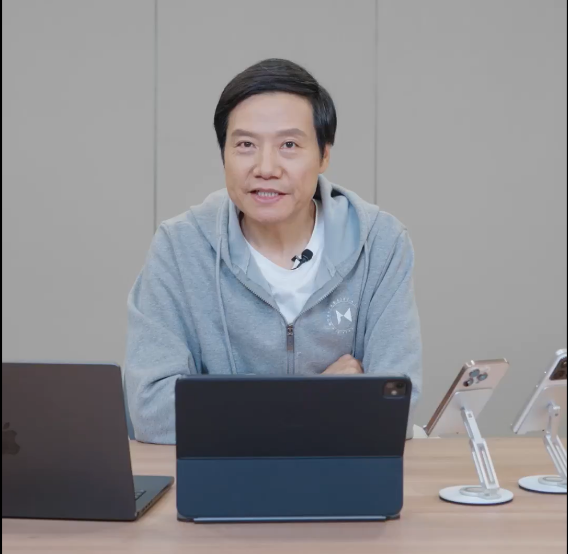
The Importance of Interoperability: A Shift in Consumer Choice
The emergence of Xiaomi’s HyperConnect marks a significant turning point in consumer electronics, placing a strong emphasis on interoperability among devices. Traditionally, consumers often found themselves constrained by the limitations of specific ecosystems, particularly with brands like Apple, which excelled in offering a seamless user experience but at the cost of device flexibility. HyperConnect seeks to break these chains, granting users the freedom to choose devices based on their individual needs rather than loyalty to a single brand.
This shift towards interoperability aligns with a growing preference among consumers for flexibility and adaptability in their technology. Users are becoming increasingly aware that their device choices should be dictated by functionality, user experience, and price rather than brand allegiance. As such, the introduction of HyperConnect is poised to attract Apple users who may feel restricted by the Apple ecosystem, encouraging them to explore more versatile alternatives offered by Xiaomi and other manufacturers.
Moreover, the luminescence of interoperability fosters innovation across the market. When consumers are no longer tied to a singular ecosystem, companies are compelled to enhance their offerings, ensuring that their devices remain competitive in terms of capabilities and adaptability. This fierce competition can lead to better products at fairer prices, ultimately benefiting consumers. Furthermore, as more brands adopt interoperable frameworks, the overall landscape of consumer electronics will evolve, pushing technology toward a more user-centered approach.
In summary, the integration of Xiaomi’s HyperConnect signifies a pivotal moment in consumer choice, emphasizing the importance of device interoperability. By liberating users from restrictive ecosystems, this innovation encourages a reexamination of personal technology options, and it heralds a new era prioritizing functionality, versatility, and consumer empowerment.
source


